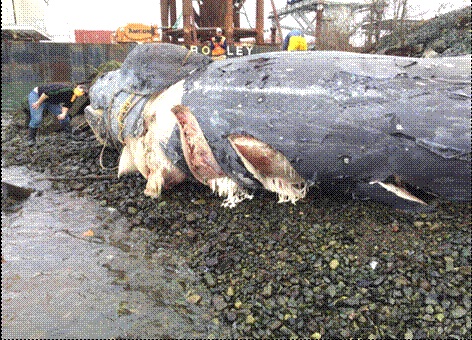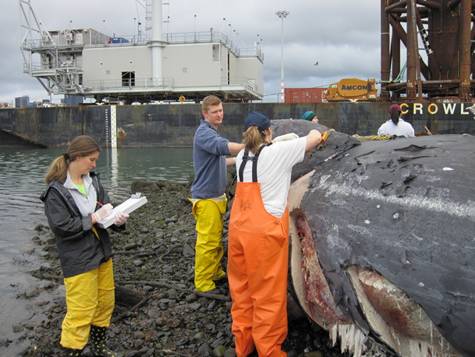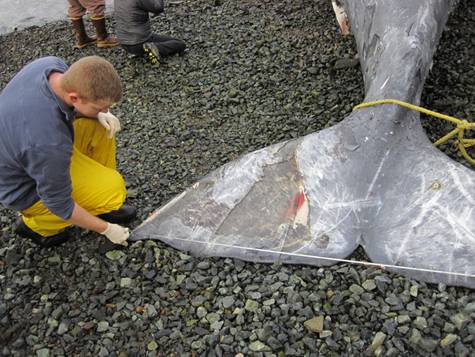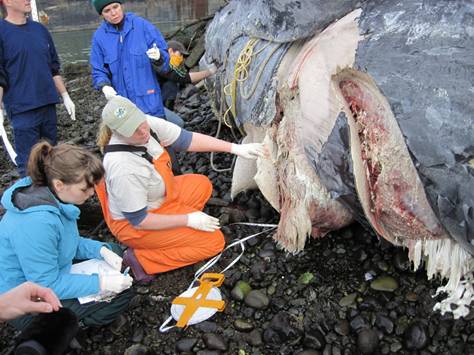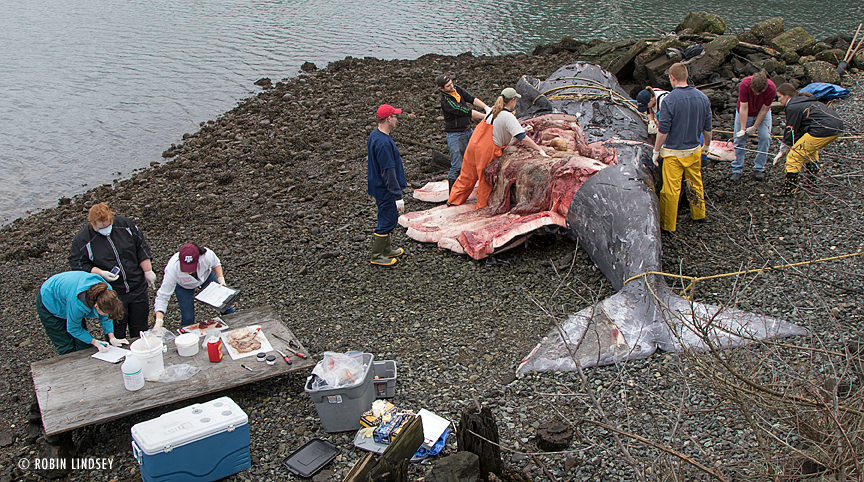The examination of a dead gray whale on 24 January 2015 reveals it was killed by ship’s propeller. The gray whale found late on 21 January 2015 under Pier 52 was examined on 24 January by biologists from Cascadia Research, Washington Department of Fish and Wildlife, Seattle Marine Mammal Stranding Network, Seattle Seal Sitters, and other stranding network members in coordination with NOAA Fisheries. The 30’5″ juvenile female was in excellent body condition, with thick, oily blubber and food remains in the intestines. There were large, deep, evenly-spaced gashes on the right side, extending up the back of the animal, caused by a large propeller. These injuries were determined to have occurred prior to death, likely only a few days earlier and therefore likely in Puget Sound. A live unidentified whale was sighted from the Seattle-Bainbridge Island ferry on the afternoon of 21 January (reported to Orca Network) and given this was earlier in the day than when the dead whale was discovered and in the same general area, may have been the same whale. Cascadia Research compared photos of the stranded whale to our gray whale catalogs and to a gray whale sighted weeks earlier but no matches have been found.
Samples were collected for a variety of ongoing studies, including disease screening, contaminants, genetics and food habits. On the afternoon of 26 January, the remains of the whale were towed to a location identified by Washington Department of Natural Resources and sunk. In addition to the responders mentioned above we thank NOAA, Washington State Department of Transportation/Ferries Division, the Port of Seattle, and Global Dive and Salvage for towing, providing an examination site, and sinking the whale.
While gray whales strandings in Washington are not that unusual (on average about a half dozen a year), most are in spring and early summer (March to June). Both the timing and location under the docks in Seattle made this animal unusual. The good well nourished condition of the animal makes sense for this time of year since this stranding occurred after the long feeding season and likely as this animal was migrating south to the winter breeding grounds.
Photographs below show members of the stranding response team conducting the examination (all photos courtesy of Cascadia Research except photo at bottom by Robin Lindsey).
